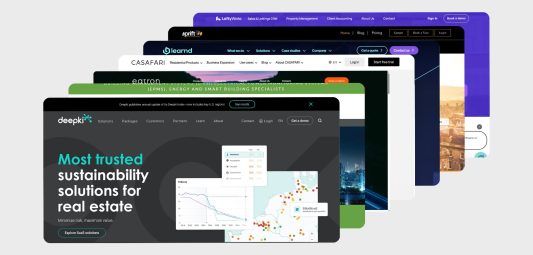Data Explorer v2 analyses 1 million company websites, and has a refined algorithm for data mining from website text. This means that it analyses more companies, more deeply, building more accurate and extensive datasets. This is why we’ve been able to go deeper into the AI sector than ever before. Our updated Artificial Intelligence RTIC showcases the benefits of our machine learning technology for industrial classification. It’s also a fantastic opportunity to update and share our knowledge of Artificial Intelligence in the UK.
Breakdown of the Artificial Intelligence sector
We have used the same 6 taxonomies we published in October 2020. Hover over the chord diagram to explore the relationships among the sectors. You can find a short definition for each under the diagram.
- Data Analysis: these companies use artificial intelligence to process large amounts of data. Within this group, we have found 470 companies working in the field of life and medical sciences, and 526 offered business intelligence services.
- Enabling Platforms: these organisations provide others with platforms powered by artificial intelligence, making it easier for others to access and use the technology. 944 of these companies refer to themselves a as Software-as-a-Service (SaaS) or Platform-as-a-Service (PaaS) providers.
- Image Processing: this technology allows machines to understand, scan and analyse images. It is preferably used in manufacturing and Industry 4.0, in either robotics or automated systems. This is why we find 382 companies referencing robotics, and 507 referencing automated systems.
- Machine Learning: this is a contested taxonomy, as far as there are discussions on whether machine learning is strictly artificial intelligence. We have acknowledged these debates in our data by creating a separate segment for machine learning, which is largely applied to analytics.
- Natural Language Processing (NLP): the companies in this taxonomies mostly provide conversational AI or chatbots. This technology is able to recognise language patterns, and respond. It has mostly been applied in marketing and costumer service.
- Signal Processing: these companies develop AI technology that is able to record and interpret signals on real-time. In this context, “signal” can mean many things: from distance (measured by radar or LiDAR technology), to temperature or voices; they are all understood as real-time data AI can understand and react to. Smart building technology controlling temperature or autonomous vehicles systems use this kind of artificial intelligence on their products.
Financial insights
Our updated dataset tells us that the estimated net worth for the sector as a whole in 2020 was £54.1bn. This finding highlights that previous reports underestimated the value of the sector as a whole. Each of it’s sub-sectors varies in scale. The bar chart below represents the net worth, the employee numbers and the net productivity for each sub-sector.
It’s clear that companies in the Enabling Platforms sub-sector accumulate the highest net worth. Data Analysis companies have the highest net productivity, a rate that relates net worth and the total number of employees.
Our work in Artificial Intelligence has expanded during the last months. Data Explorer has allowed us to easily update our data, but we have also approached the sector from other standpoints. Maintaining our recent promise to work out loud, we’ll be publishing more on Artificial Intelligence in the next few days. Keep an eye out for update on Industry 4.0, GreenTech, FinTech and Systems Optimisation in the upcoming days.


